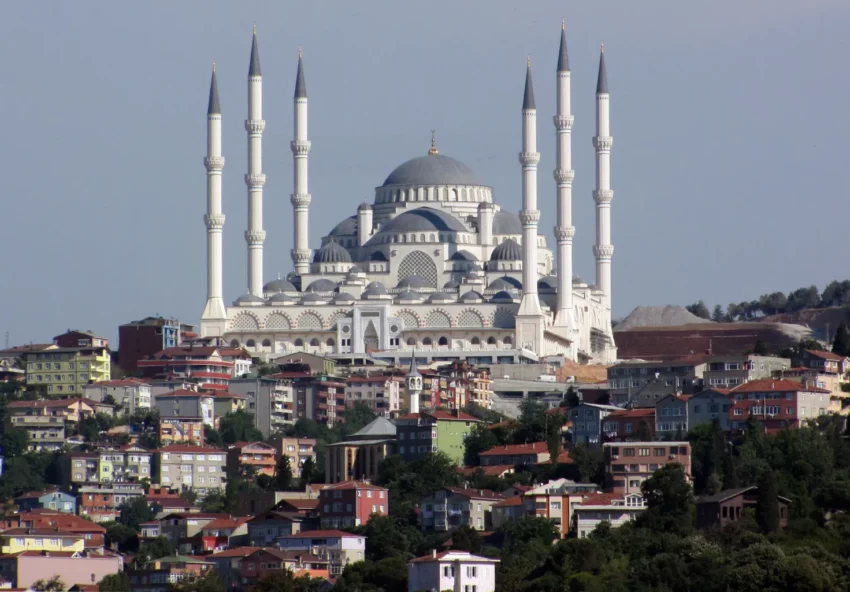The Architectural and Cultural Significance of Çamlıca Mosque
Çamlıca Mosque, located in Istanbul, Turkey, stands as a monumental achievement in contemporary Islamic architecture. Officially opened in 2019, this mosque is not only a place of worship but also a symbol of modern Turkish identity. It combines traditional Islamic architectural elements with modern design, creating a unique and striking structure.
Get your dose of History via Email
The mosque’s location on Büyük Çamlıca Hill offers panoramic views of the Bosphorus and the city of Istanbul. This strategic placement underscores its importance as a cultural and religious landmark. The design of Çamlıca Mosque incorporates a blend of Ottoman and Seljuk architectural styles, which is evident in its large central dome, surrounded by six minarets. The inclusion of six minarets is significant, as it matches the number at the Blue Mosque, one of Istanbul’s most famous historical mosques.
Design and Construction
The construction of Çamlıca Mosque began in 2013 and took approximately six years to complete. The project was initiated by the Turkish government and has since been a subject of national pride. The mosque spans over 57,500 square meters, making it one of the largest mosques in the world. It has the capacity to accommodate up to 63,000 worshippers, which highlights its role as a major gathering place for Muslims, especially during important religious occasions like Ramadan and Eid.
The interior of the mosque is equally impressive. It features a large prayer hall, adorned with intricate calligraphy and traditional Islamic decorations. The use of modern technology is also evident, with state-of-the-art sound and lighting systems enhancing the spiritual ambiance. Moreover, the mosque includes a museum, art gallery, library, and conference hall, making it a center for Islamic learning and culture.
Environmental Considerations
One of the remarkable aspects of Çamlıca Mosque is its attention to environmental sustainability. The mosque’s design incorporates green building principles, which are crucial in today’s context of climate change and environmental degradation. The use of energy-efficient lighting and heating systems reduces the mosque’s carbon footprint, setting a precedent for future religious and architectural projects.
Cultural Impact and Reception
Since its inauguration, Çamlıca Mosque has become a significant cultural icon in Istanbul. It attracts thousands of visitors and worshippers, not only from Turkey but from around the world. The mosque serves as a bridge between the past and the present, showcasing the rich Islamic heritage while embracing the challenges and opportunities of the modern world.
The reception of Çamlıca Mosque has been largely positive, with many praising its grandeur and architectural beauty. However, it has also sparked discussions about the role of religion in public life and the use of state resources for religious projects. These debates are important as they reflect the dynamic nature of Turkish society and the diverse opinions of its people.
In conclusion, Çamlıca Mosque is more than just a place of worship. It is a testament to Turkey’s rich cultural heritage and its ongoing journey in the modern era. Through its grand architecture and multifunctional facilities, it offers a space for spiritual reflection, cultural exchange, and intellectual growth.
Sources: Wikipedia

